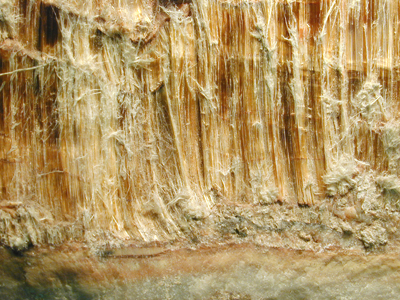
|
|||||
|
|
|||||
|
|
|
Asbestos: what's in a name
07.29.06 -- Any of more than a dozen fibrous minerals can be classified as asbestos. Controversy still brews over which fibers constitute true asbestos. Two distinct families of the mineral exists. The asbestos mineral which is most often found lying beneath American communities contains chrysotile, the least toxic. All other asbestos minerals are in a family known as amphibole asbestos. Tremolite falls into the amphibole asbestos family. OSHA (Occupational Safety and Health Administration) was the first agency to regulate asbestos. OSHA's rules, which rigidly define the mineral by fiber length and width, only covers chrysolite and five amphiboles, including tremolite. It's not that these six minerals are the only ones which contain potential asbestos hazards; rather, these six minerals are the only ones which were being widely mined and used commercially when OSHA wrote their asbestos regulations. Over the years an EPA (Environmental Protection Agency) definition of asbestos has expanded to include fibers of a different size or makeup which may be just as toxic as the OSHA-defined fibers. For instance, asbestos contamination of the vermiculite mine near Libby, Montana, (where an epidemic of lung cancers and other respiratory diseases claimed the lives of 200 and sickened 1,200 others) was initially attributed to tremolite asbestos. Further examination of the Libby mine found that only 6 percent of the material contained tremolite. 80 percent of the contaminating material contained winchite and the remainder contained richerite. Richerite and winchite are both chemically similar to asbestos, but are not classified as asbestos by OSHA standards. However, the health community does classify them as asbestos, because both have been found to trigger asbestos diseases. 1
©2006 Information for this article was compiled by MAGS member, Mike Baldwin. Photograph of Fibrous Asbestos courtesy of Glendale Community College, Susan Celestian. Used by permission. Information used for educational purposes under the provisions of the "Fair Use Act of 1976".
References:
|
|||
|
|
|||||
